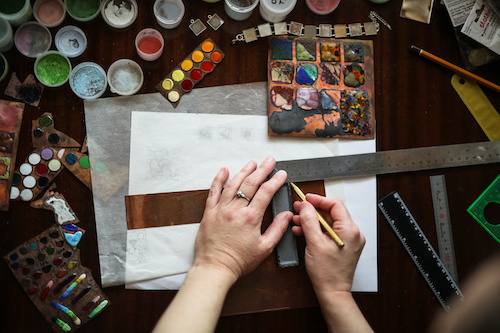Working with Enamels
A BEGINNER’S GUIDE
Things you need to start enamelling :
1. PREPARATION
2. COUNTER-ENAMELLING
→ Only necessary if the thickness of the metal is less than 1 mm.
Both metal sides are enamelled to compensate for stress. This prevents the enamel from chipping off.
3. SIEVING THE FRONTSIDE

4. FIRST BURNING
→ This should only begin when the bonding agent has dried completely and the kiln has reached a firing temperature of approx. 800°C.
5. WET APPLICATION OR USING THE PAINT BOX
→ In addition to many different enamelling techniques, we would like to introduce you to these two methods to get you started.
a) Wet application
Now the surface can be designed as desired with a wet application in the second course.
b) Painting with colours from the paint box
6. SECOND BURNING
→ Also before the second firing make sure that the distilled water used has evaporated. Only then should it be put into the kiln.
